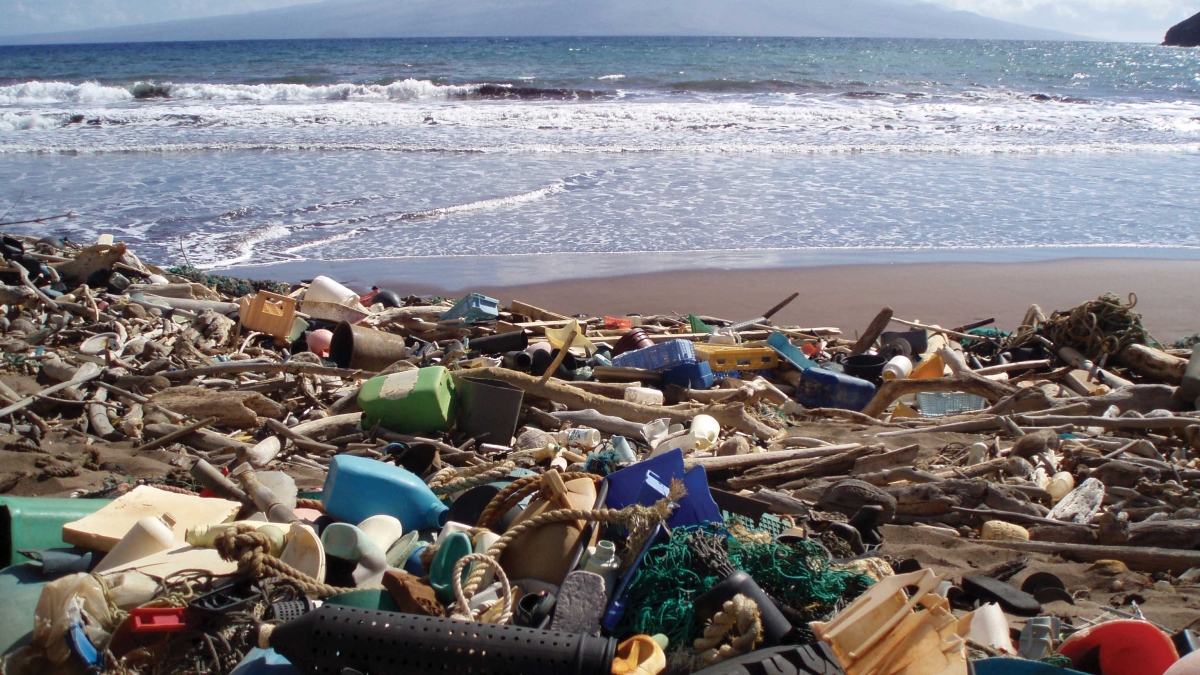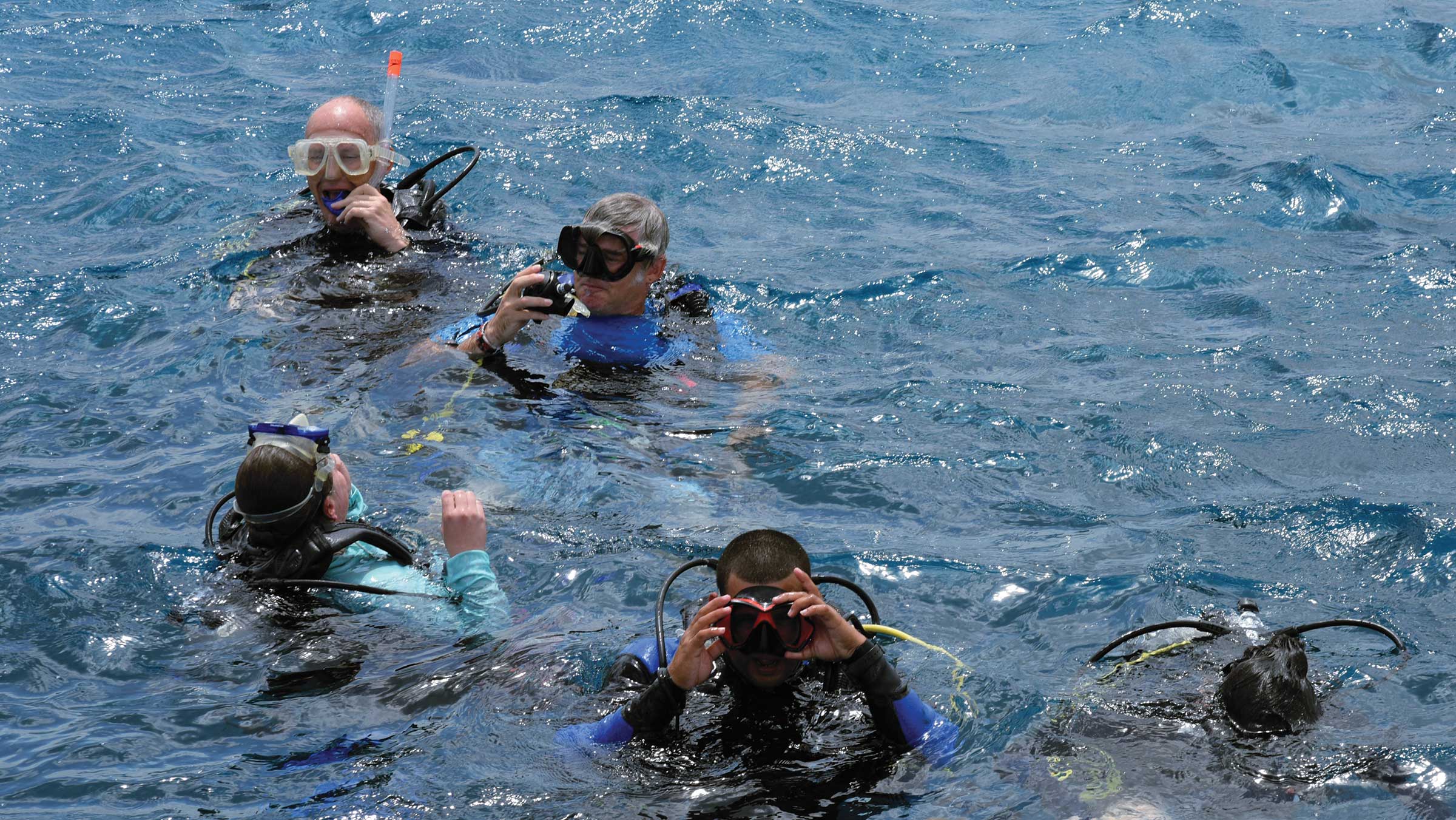Marine biologist Beth Polidoro did not always aspire to be a scientist. She first wanted to be a reporter, covering wars and human rights abuses across the globe. But a short stint working at a newspaper covering community events and writing movie reviews left her uninspired. She always loved spending time outdoors and was inspired to apply for a job at an environmental organization, which began her foray into science.
At her new job, Polidoro wrote a grant to teach kids how to use school gardens as part of their science classes. They got the grant, and she taught third-graders how to plant seeds.
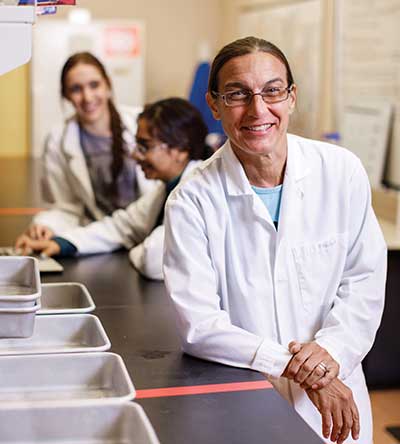
Beth Polidoro, leader of the Salt Water Assessment Team lab and associate professor of environmental chemistry and aquatic conservation at ASU. For more, visit research.asu.edu/fishing. Photo by Andy DeLisle/ASU
Today, Polidoro reports on marine biology as leader of ASU’s Salt Water Assessment Team lab and associate professor of environmental chemistry and aquatic conservation in the School of Mathematical and Natural Sciences in Arizona State University's New College of Interdisciplinary Arts and Sciences. As a scientist, she looks at pollution in the marine environment: where it comes from, where it ends up, and what the impact of chemicals are on both marine species and people who eat seafood. And the reporter in her really enjoys translating those findings in a way people can understand.
“I don’t really like to just go up to someone and say, ‘That piece of tuna that you’re eating has 25 parts per million arsenic and mercury in it,’ because people will just glaze over and not really know what it means,” she said. “But telling someone that eating a certain type of fish twice a week over their lifetime may put them at a 25% heightened risk of cancer, for example, is something they can understand and use to make better choices about what to feed their families.”
Seafood scientist
Polidoro doesn’t just translate what she finds in the field and the lab to health outcomes. She also uses it to help guide conservation and environmental policies. Although she looks at freshwater fisheries in Arizona, sampling fish that people are catching and looking for contaminants, she does most of her work overseas in developing countries — where the need is greatest.
“Here in the U.S. and in Europe, we’re really blessed,” Polidoro said. “We have lots of data, we have lots of scientists, we have lots of equipment and we have lots of capacity for looking at pollution and impacts. We have a lot of good regulations, too, monitoring and mitigating those pollutants from impacting the environment. Step outside those countries and you don’t see the same things at all. There’s very little regulation, practically no monitoring, and very little capacity to do those things.”
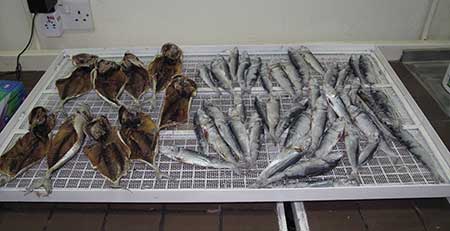
Seafood specimens saved from the Gulf of Oman in the Middle East. Photo by Beth Polidoro
So Polidoro brings capacity to these places, not just sampling and analyzing contaminants but also helping them determine what the biggest risks to ecosystems and human health are, which helps them mitigate those risks or work to reduce impacts.
Last year, while on sabbatical, Polidoro received a Fulbright grant to research microplastics in seafood in the Philippines and took her entire family with her. Her three children — ages 5, 6 and 8 — went to international school. Her husband, a wildlife biologist working as a director of conservation science at the Phoenix Zoo, conducted research of his own while she completed her research and conducted trainings on marine biodiversity risk assessment methodology.
The Philippines is the most biodiverse country in the world in terms of marine species with 4,000. By comparison, the Eastern Tropical Pacific from California to Chile has about 1,000 species of fish. There are 60 species of corals, whereas the Philippines has 700. But the Philippines is also one of the world’s top producers of plastic pollution as well as other contaminants.
“You walk down the street in the Philippines, and you see garbage everywhere. There are health impacts. People are concerned,” Polidoro said. “They want to know what fish are more contaminated than others, and if I am eating fish that’s high in contaminants, what is the dose I should be eating. They’re also worried about environmental health, and the impacts to marine species and ecosystems.”
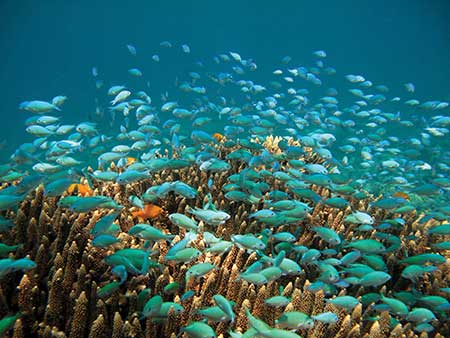
The Philippines is a top producer of plastic pollution, threatening 4,000 marine species in some of world’s most biodiverse waters, including Dauin National Marine Sanctuary. Photo by Beth Polidoro
Polidoro analyzed and prioritized the impact of contaminants on marine species and habitats, developed assessment methodology for the Philippines’ equivalent of the U.S. Endangered Species Act, and conducted trainings and workshops to jump-start and help maintain the initiative.
She also worked with the American Samoa Environmental Protection Agency, the territory’s equivalent of the U.S. EPA, on legislation to ban Styrofoam products and to develop economical and environment-friendly alternatives.
“That’s huge because in American Samoa, Styrofoam is king,” Polidoro said. “Everyone has stacks of takeout containers in their homes to send guests who come to their houses with food to take home when they leave, so Styrofoam is part of the culture.”
Passing it on to students
Polidoro’s work doesn’t just benefit the communities with which she works. She also brings student researchers along, allowing them the opportunity to study the impact of plastic pollution on marine species and on human health in remote locations.
“She has an incredible track record with getting funding for her research, which she has translated into just amazing, unbelievable opportunities for the students who work with her,” said Lara Ferry, associate dean of research and strategic initiatives for the New College of Interdisciplinary Arts and Sciences. “She’s always thinking about how to leverage that success to pass it on to students and make sure students are getting new experiences. They’re going to be the next generation of scientists and … all of that makes them really well-rounded and well-equipped scientists.”
Erin Murphy, ’23 PhD in biology and society, spent two weeks in the Philippines with Polidoro and collected sediment and shellfish at Tanay (a town east of Manila) and seafood from the local market alongside local students for later analysis at Polidoro’s West campus lab.
“All of Beth’s work is really collaborative with professors who are already in the area,” she said. “She’s very good at working in different communities and listening to the voice of locals and understanding what they want and what they need in their communities.” And, Murphy says, local residents appreciate the value of learning about the health risks of microplastics.
Beth Polidoro’s Salt Water Assessment Team works the waters of the Caribbean Sea off Cuba. Photo by Beth Polidoro
While Polidoro’s work is transforming customs in the Philippines, American Samoa and elsewhere, she has changed some of her own habits. She doesn’t drink from plastic bottles or heat plastic in the microwave, doesn’t wear makeup and is careful about what’s in the sunscreen she uses. Still, she remains hopeful.
“I truly believe that the amount of awareness and research and collaboration that has happened over the past five years in terms of trying to better understand and better mitigate pollution is enormous,” she said. “We’ve seen an explosion of research on how much plastic and other pollutants are getting into the environment, where that’s occurring, how they’re moving, how they’re degrading, where they’re ending up. And all sorts of groups are getting involved, not just research organizations, but governments, nonprofits, citizen groups.”
And she’s noticed people are more likely to bring their own bags to the grocery stores or use metal water bottles instead of plastic.
“I think people say, ‘Oh, pollution, I don’t care about that. Oh, the environment, I don’t care about that.’ You don’t want clean air to breathe? You don’t want clean water to drink?” Polidoro said. “Because if you don’t, 30 years down the road, you might not feel so good. There’s a connection between conservation and the environment and your own health and your ultimate happiness.”
Written by Yael Grauer, a graduate student at ASU’s Cronkite School of Journalism and Mass Communication who has written for national publications including Wired and Slate. This story originally appeared in the fall 2019 issue of ASU Thrive magazine. Top photo by NOAA Marine Debris Program
More Science and technology

ASU-led space telescope is ready to fly
The Star Planet Activity Research CubeSat, or SPARCS, a small space telescope that will monitor the flares and sunspot activity of low-mass stars, has now passed its pre-shipment review by NASA.…

ASU at the heart of the state's revitalized microelectronics industry
A stronger local economy, more reliable technology, and a future where our computers and devices do the impossible: that’s the transformation ASU is driving through its microelectronics research…

Breakthrough copper alloy achieves unprecedented high-temperature performance
A team of researchers from Arizona State University, the U.S. Army Research Laboratory, Lehigh University and Louisiana State University has developed a groundbreaking high-temperature copper alloy…


